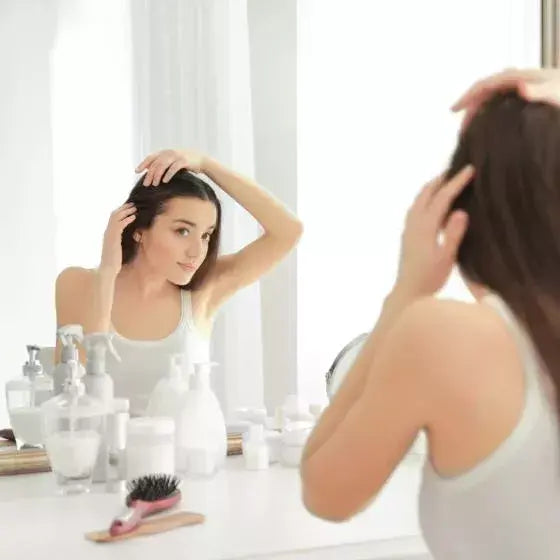Alopecia is a medical condition that causes hair to fall out, and it can manifest itself in several different forms. There are different types of alopecia, and each comes with multiple causes.
Alopecia Areata
One of the most well-known forms of alopecia is alopecia areata, an autoimmune condition that typically affects teenagers and young adults. Alopecia areata is an autoimmune condition whereby the hair follicle loses its immune privilege, causing inflammation to develop around the hair bulb at the base of the follicle, resulting in ‘patchy’ hair loss. The condition can be hereditary, and it appears more frequently in people with a family history of autoimmune disorders such as rheumatoid arthritis, celiac disease, or type 1 diabetes. If you or the teen in your life suffers from alopecia areata, you will notice some bald spots rather than a receding hairline. There are also other, more advanced forms of alopecia, such as alopecia totalis, where all the hair from the scalp is lost, or alopecia universalis, where hair loss occurs across the entire body. Depending on the size of the bald patches, it is possible that the hair can grow back and become thicker. However, it's best to be seen by a doctor who will be able to advise you on treatment. Some common treatments for alopecia areata are:
- Steroid-based creams, tablets, and/or injections
- Ultraviolet light
- Contact sensitization treatments
- Minoxidil lotion
- Dithranol cream
- Immunosuppressant tablets
Dealing with the emotional impact of alopecia areata might be difficult, especially during a time in your life when it feels like your peers are heavily focused on physical appearance. If you're struggling, it's important that you get psychological and social support to help you deal with and understand this condition. Organizations like the National Alopecia Areata Foundation are a good place to turn. You can also reach out to loved ones or medical professionals for support.
Traction Alopecia
This type of alopecia usually occurs when the hair is being stressed by either pulling it tightly in braids, buns, or by using hair extensions. The effects may be reversed if diagnosed early enough and the 'causative factors’ are removed.
Androgenetic Alopecia
Also known as male or female pattern baldness, androgenetic alopecia is a common cause of hair loss that can start as early as mid-teen years. Though it can affect both sexes, male pattern baldness is more common. Most male pattern baldness cases are related to inherited genes, many of which dictate the sensitivity to dihydrotestosterone (DHT), a testosterone-produced hormone. DHT sensitivity leads to weakened hair follicles, causing strands to become shorter and thinner. This will trigger thinning around the crown and men will see more of a pronounced M-shaped hairline developing, as well as a lighter pigment. This sensitivity to DHT and the beginning of hair thinning can start as soon as you hit puberty. It has been found that 20% of young men experience substantial thinning by the age of 20, and this percentage will increase with age. Of course, there are other causes of hair loss and thinning for both sexes, but for men and boys, genetics play a critical role.

